SpaceTime with Stuart Gary
Join host Stuart Gary for weekly explorations into Astronomy, Space, and Science News, featuring insights from 19 years on Australian Public Radio and industry experts.Become a supporter of this podcast: https://www.spreaker.com/podcast/spacetime-with-stuart-gary--2458531/support.
Cosmic Speedsters: Unravelling Our Solar System's Surprising Velocity and Enceladus' Organic Secrets
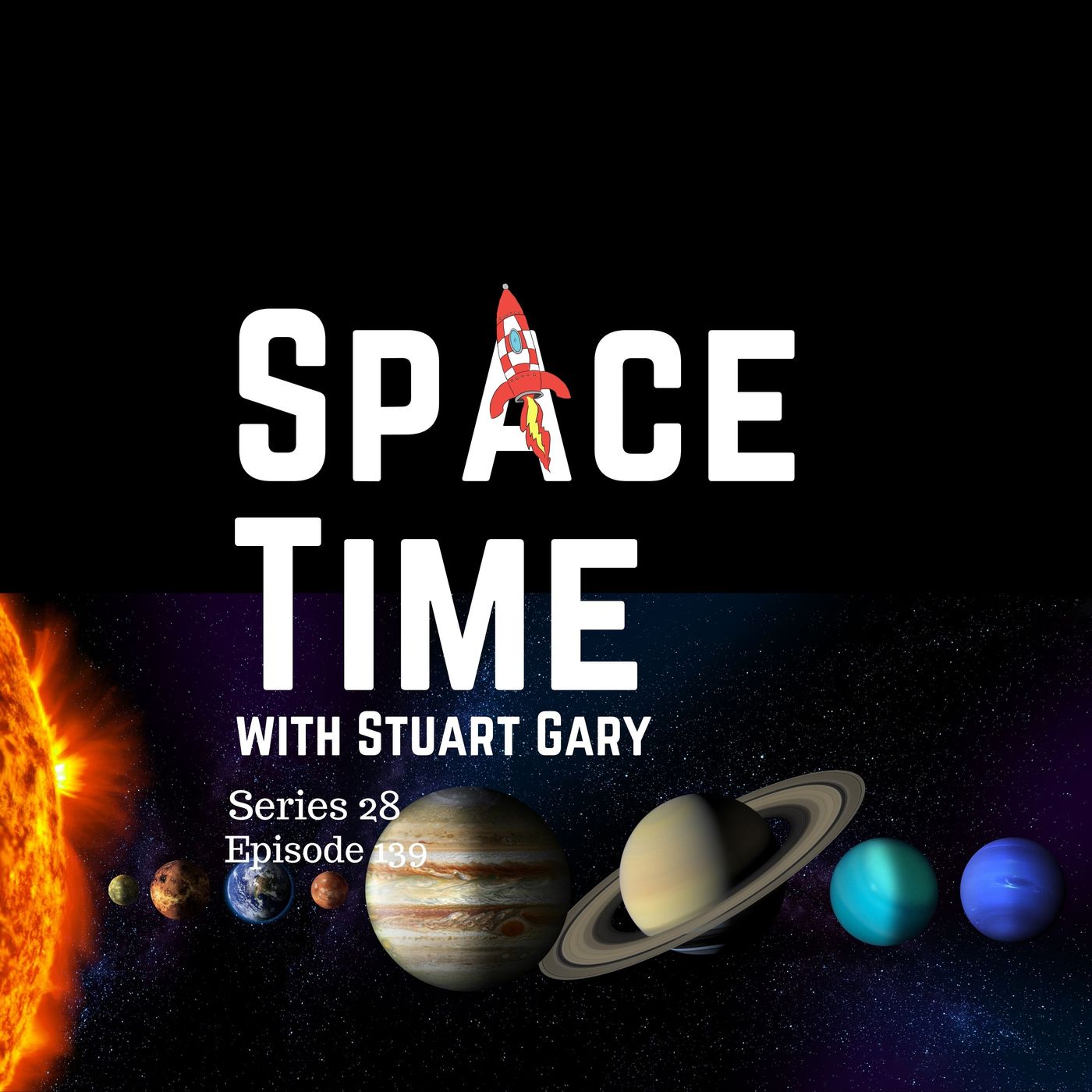
(00:00:00) Cosmic Speedsters: Unravelling Our Solar System's Surprising Velocity and Enceladus' Organic Secrets
(00:00:46) Our solar system is moving faster than expected
(00:04:38) Organic molecules discovered erupting from Saturn’s moon Enceladus
(00:08:29) A new satellite launched to study Earth’s oceans
(00:13:49) The Science Report
(00:15:52) Alex on Tech
In this episode of SpaceTime, we uncover groundbreaking insights into Earth's mysteries and the cosmos beyond.
Mysterious Structures in Earth's Mantle
A new study reveals that enigmatic structures within Earth's mantle may hold vital clues about why our planet evolved the conditions necessary for l...
Cosmic Clues Beneath Us: The Mantle's Role in Life and the Milky Way Unveiled
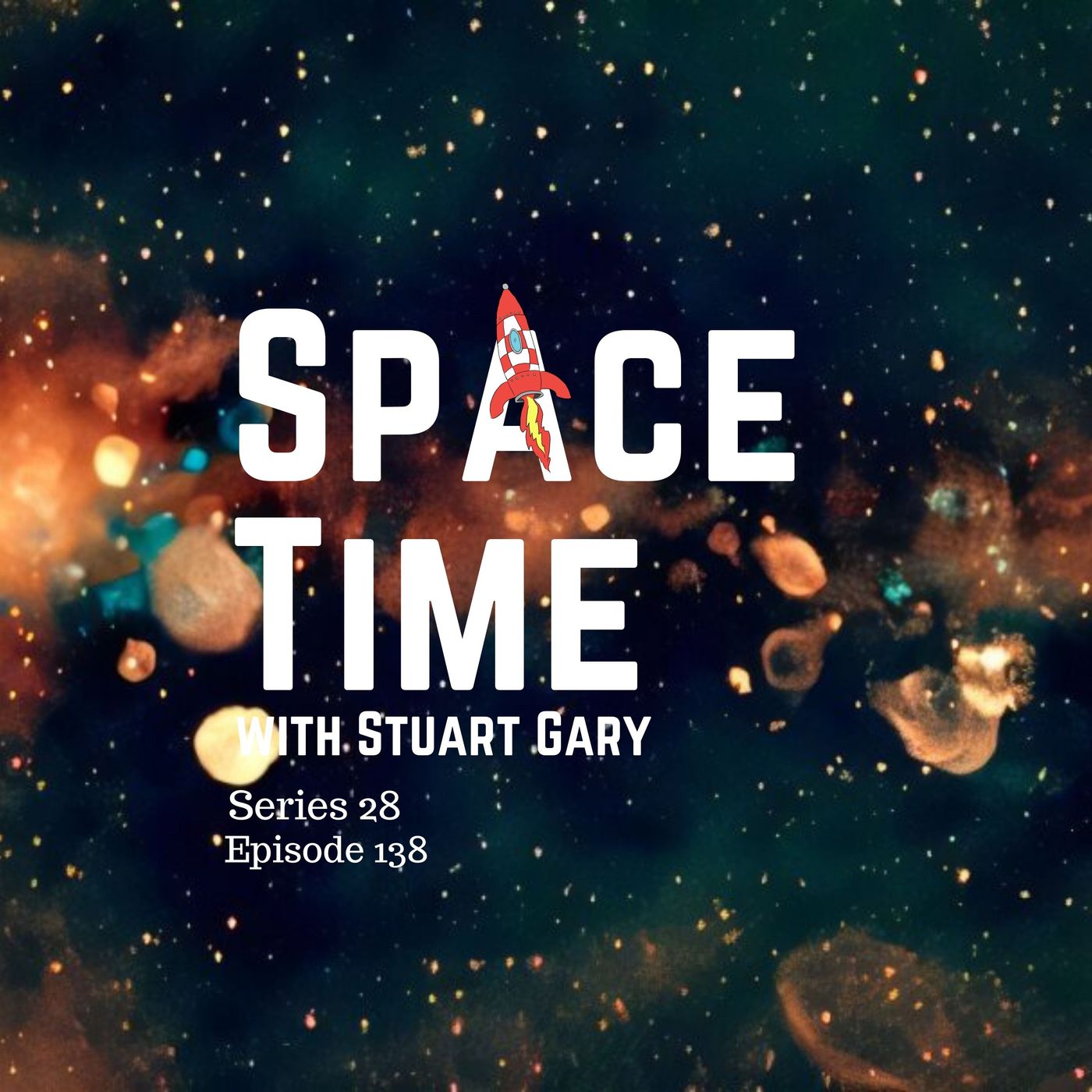
(00:00:00) Cosmic Clues Beneath Us: The Mantle's Role in Life and the Milky Way Unveiled
(00:00:47) Mysterious structures within Earth's mantle may hold clues to life
(00:05:05) A new unprecedented view of the Milky Way Galaxy
(00:12:36) Stranded Chinese taikonauts return safely to Earth
(00:14:21) The Science Report
(00:16:58) Skeptics guide to the return of the haunted doll.
In this episode of SpaceTime, we uncover groundbreaking insights into Earth's mysteries and the cosmos beyond.
Mysterious Structures in Earth's Mantle
A new study reveals that enigmatic structures within Earth's mantle may hold vital clues a...
Exploring Mars and Beyond: The Escapade Mission and the Expanding Mysteries of the Pleiades
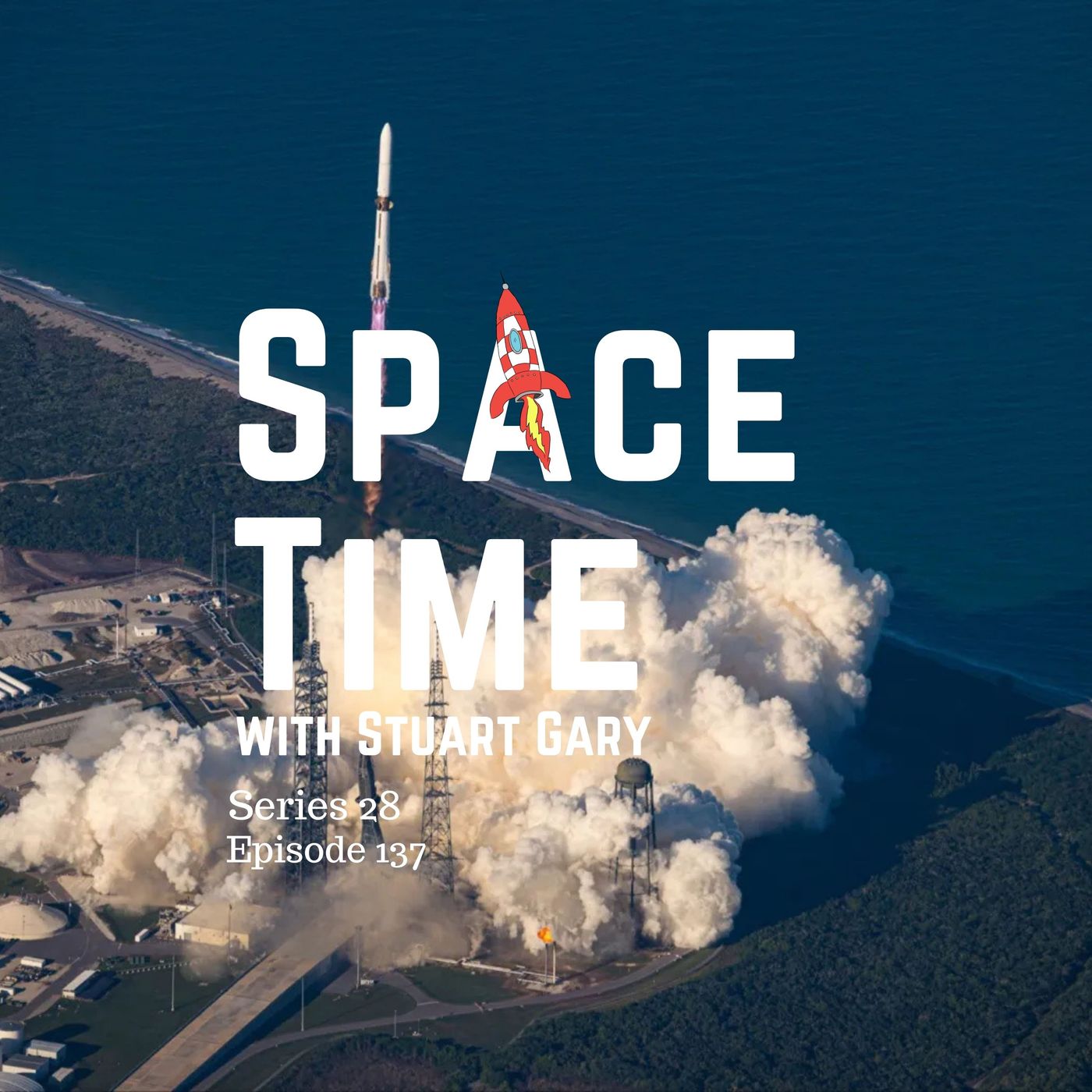
(00:00:00) Exploring Mars and Beyond: The Escapade Mission and the Expanding Mysteries of the Pleiades
(00:00:43) NASA's ESCAPADE mission to Mars blasts off
(00:10:00) The Pleiades prove to be far bigger than thought
(00:14:05) Ending the debate over interstellar comet 3I-Atlas
(00:17:05) The Science Report
(00:19:39) Skeptics guide to talking to plants.
In this episode of SpaceTime, we explore the latest advancements in space exploration and cosmic discoveries that deepen our understanding of the universe.
NASA's Escapade Mission Launches to Mars
NASA has successfully launched its first dual satellite mission to Mars, the E...
Ancient Rocks and Cosmic Forces: Exploring Earth's Origins and the Hunt for a Fifth Force

In this episode of SpaceTime, we delve into remarkable discoveries that illuminate the origins of our planet and the cosmos beyond.
Ancient Australian Rocks Shed Light on Earth's Origins
Scientists have made significant strides in understanding the formation of Earth and the Moon through the analysis of 3.7 billion-year-old feldspar crystals from the Murchison region in Western Australia. This research reveals that continental growth began relatively late in Earth's history, around three and a half billion years ago, suggesting a shared composition between Earth and the Moon following a colossal impact event. The findings challenge e...
Auroras and Cosmic Craters: Unveiling Earth's Spectacular Space Weather and Impact Discoveries
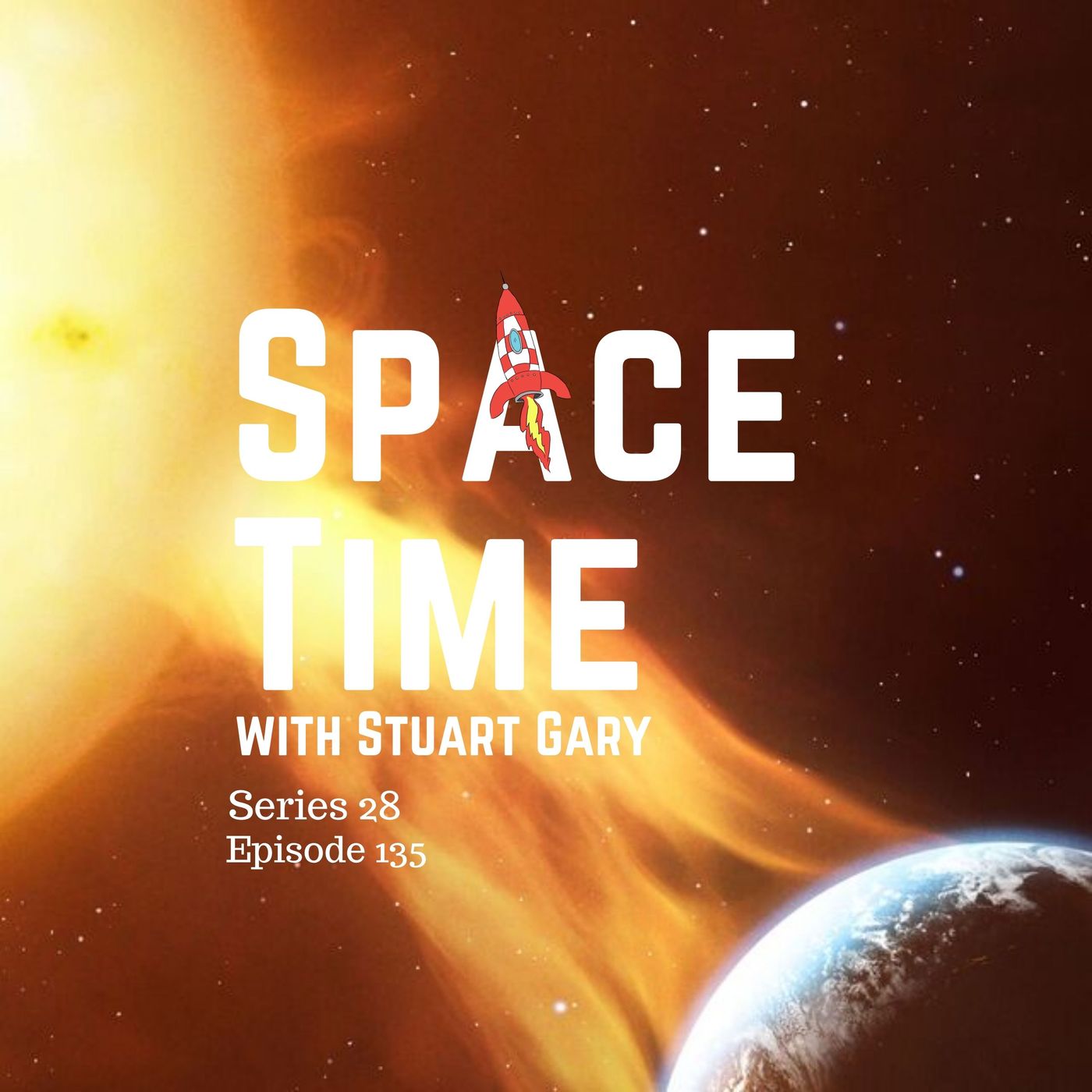
In this episode of SpaceTime, we explore the latest astronomical phenomena and significant discoveries that are shaping our understanding of Earth and space.
Auroral Displays Light Up the Skies
Planet Earth has been treated to an extraordinary display of auroras, with both the Aurora Australis and Aurora Borealis lighting up the skies following three powerful X-class solar flares, including an X 5.1 event on November 11. This segment dives into the mechanics behind these solar flares, the resulting coronal mass ejections (CMEs), and how they triggered spectacular auroras visible at lower latitudes than usual, including sightings a...
Cosmic Beginnings and Stellar Discoveries: Unveiling the First Stars and Secrets of the Moon

(00:00:00) Cosmic Beginnings and Stellar Discoveries: Unveiling the First Stars and Secrets of the Moon
(00:00:47) Have astronomers finally seen the universe’s first stars
(00:04:06) Hidden secrets about the Moon and the asteroid Vesta
(00:10:45) Euclid peers deep into a stellar nursery full of baby stars
(00:16:05) The Science Report
(00:18:09) Skeptics guide to flat earthers falling flat on their face again
In this episode of SpaceTime, we uncover groundbreaking findings that could reshape our understanding of the universe's early stars, the Moon's hidden secrets, and the asteroid Vesta's internal structure.
First Stars Detected<...
Decelerating Cosmos and Solar Secrets: Unravelling Dark Energy and the Sun's Magnetic Dance
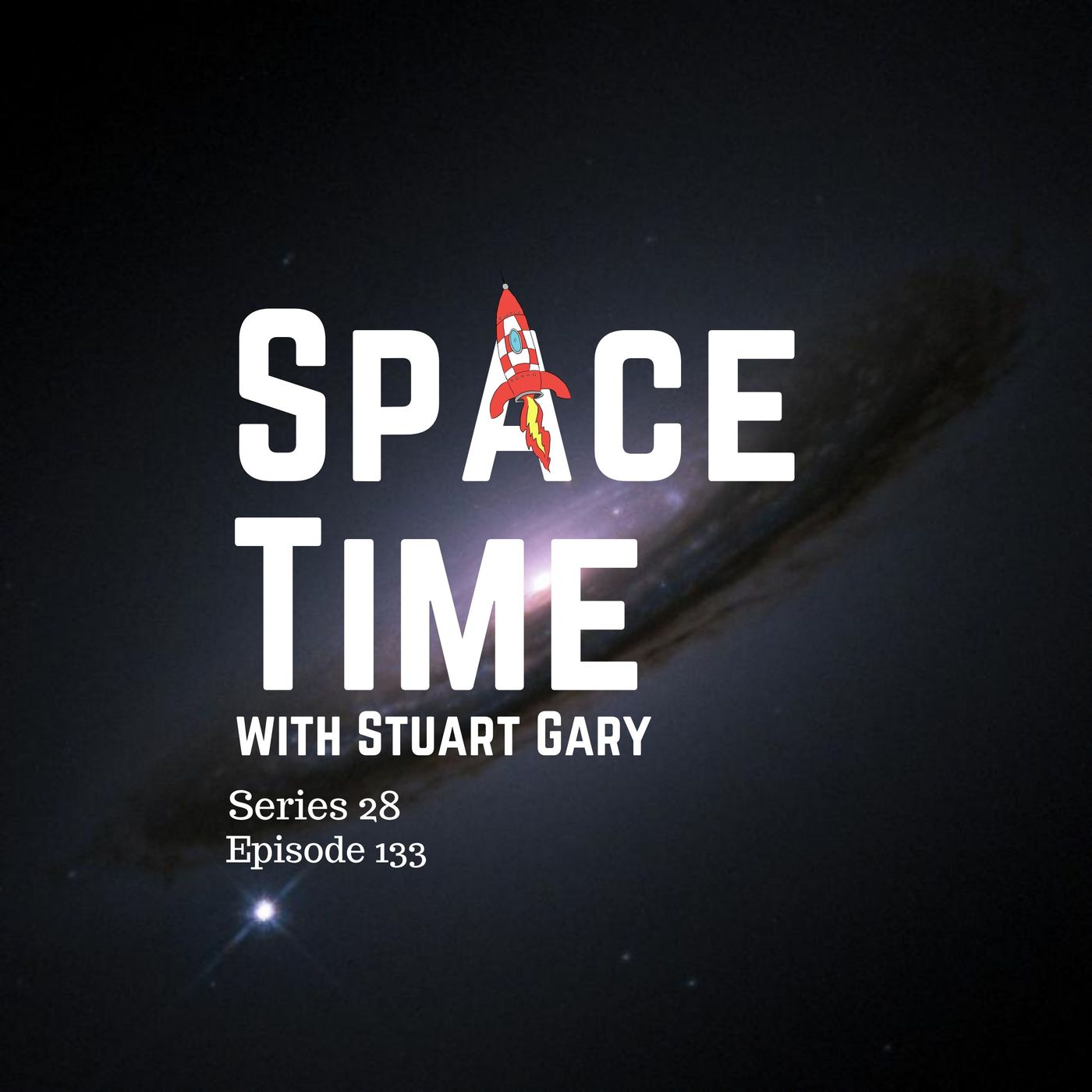
(00:00:00) Decelerating Cosmos and Solar Secrets: Unravelling Dark Energy and the Sun's Magnetic Dance
(00:00:45) More confirmation that the Universe's expansion is slowing
(00:08:53) First glimpse of the Sun’s polar magnetic field in motion
(00:14:09) Space Weather events ramping up
(00:18:24) The Science Report
(00:20:29) Alex on Tech NEO the humanoid housekeeper
In this episode of SpaceTime, we explore significant revelations about the universe's expansion, the Sun's magnetic field, and the current surge in solar weather activity.
The Universe's Expansion Rate is Slowing
A new study has confirmed that the universe's rate of...
Galactic Influences and Supermoons: Exploring Earth's Crust and Taikonaut Trials
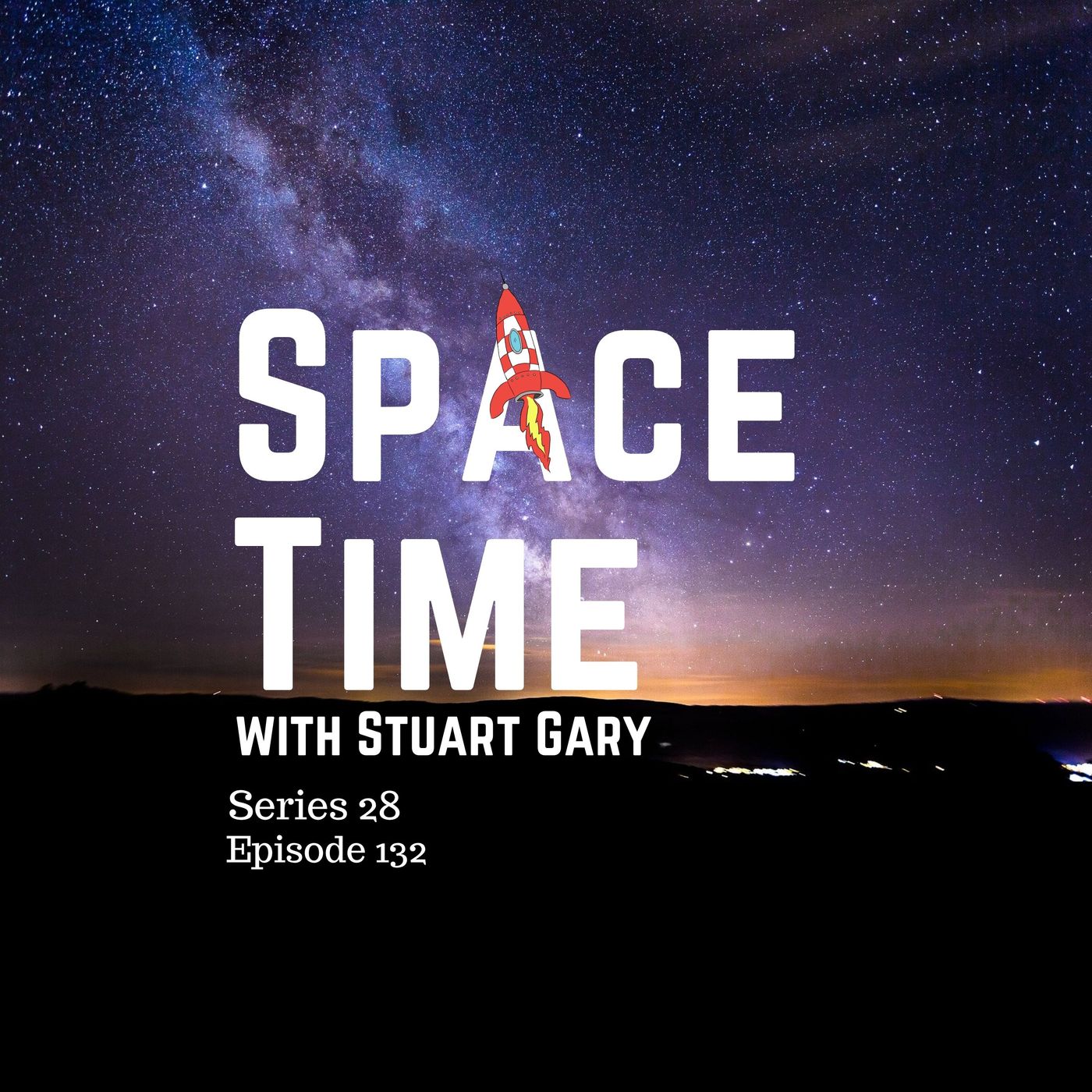
(00:00:00) Galactic Influences and Supermoons: Exploring Earth's Crust and Taikonaut Trials
(00:00:42) Earth's geology written in the stars
(00:10:30) Taikonauts stranded in space following space junk impact
(00:12:38) Biggest Supermoon of the year
(00:14:59) The Science Report
(00:17:20) Skeptics guide to jogging big foots
In this episode of SpaceTime, we delve into fascinating intersections of geology and astronomy that could reshape our understanding of Earth's history and the cosmos.
Earth's Geology Written in the Stars
A groundbreaking study reveals a compelling connection between the structure of our Milky Way galaxy and the evolution o...
Phosphine Mysteries and Lunar Returns: Unveiling Secrets of Wolf 1130C and the Moon

In this episode of SpaceTime, we explore remarkable discoveries and hypotheses that could redefine our understanding of planetary atmospheres and our journey back to the Moon.
Phosphine Discovery in Brian Dwarf Wolf 1130C
For the first time, astronomers have detected phosphine in the atmosphere of the brown dwarf Wolf 1130C, raising intriguing questions about its presence and the chemistry of such celestial bodies. This discovery, reported in the journal Science, highlights the significance of phosphorus as a potential biosignature for life and challenges previous theories regarding the abundance of phosphine in other brown dwarfs a...
Stellar Giants and Cosmic Mysteries: The Most Massive Black Hole Merger Yet

In this episode of SpaceTime, we dive into groundbreaking astronomical discoveries that challenge our understanding of the universe.
The Most Massive Stellar Black Hole Merger Ever Observed
Astronomers have detected the most massive stellar black hole merger to date, cataloged as GW23 1123, which resulted in a black hole with a staggering mass of 225 times that of our Sun. This episode discusses the implications of this merger, observed by the LIGO Virgo Collaboration, and how it pushes the boundaries of current theories on black hole formation. The rapid spinning of the resulting black hole raises i...
Interstellar Comet 3I Atlas and Hidden Ice: Unraveling Mysteries of Water and Galaxies
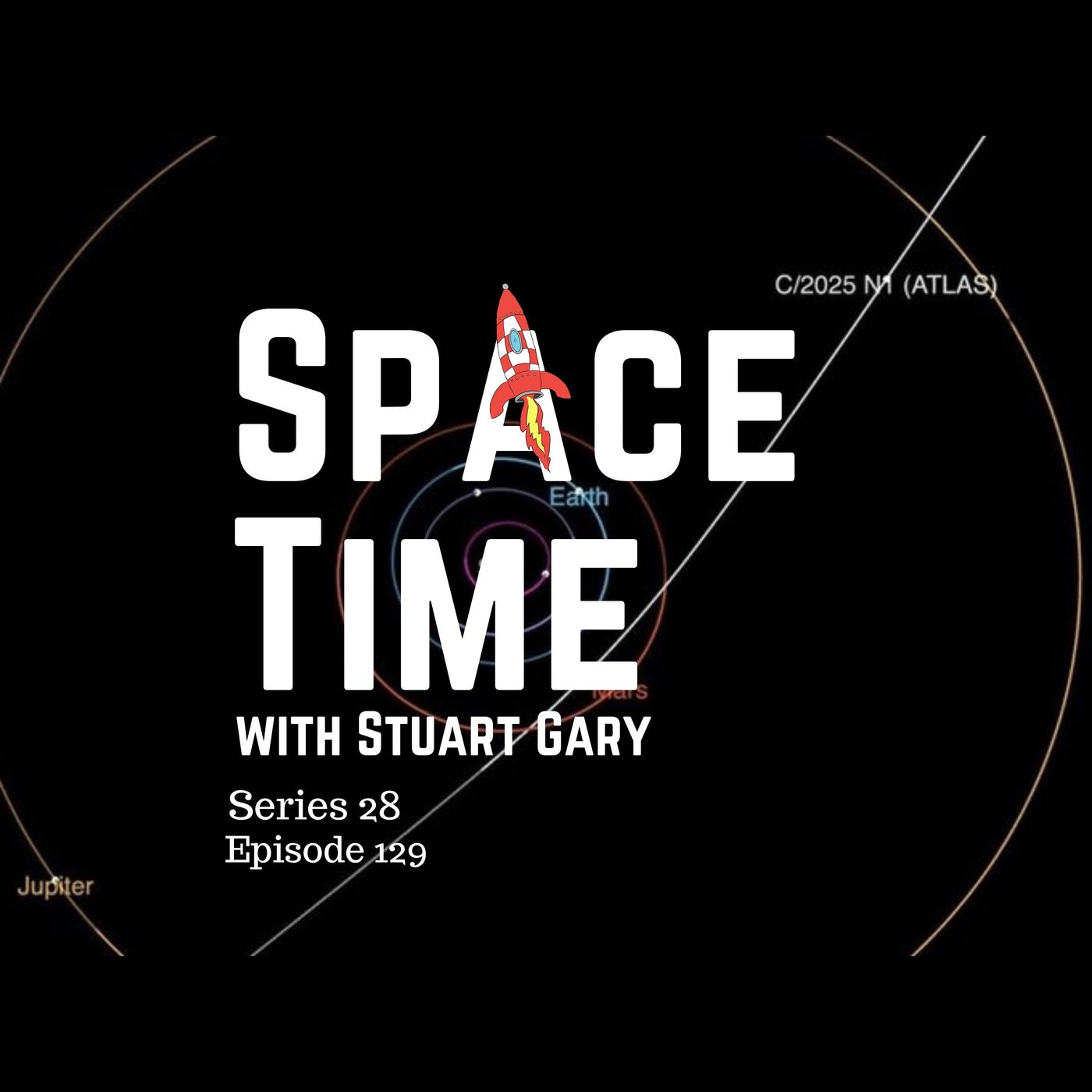
In this episode of SpaceTime, we explore a trio of intriguing astronomical phenomena that are reshaping our understanding of the cosmos.
Interstellar Comet 3I Atlas: A Close Encounter
Interstellar comet 3I Atlas has reached its perihelion, passing closest to the Sun without any signs of alien life forms, despite wild media speculation. This episode discusses how the comet maintained its expected trajectory and velocity, while also revealing groundbreaking findings from NASA's Swift Space Telescope, which detected ultraviolet signatures of water from the comet, providing new insights into the chemistry of interstellar objects and their p...
Martian Ice and Cosmic Shadows - Unveiling Life and Dark Matter Mysteries

In this episode of SpaceTime, we delve into groundbreaking discoveries that could reshape our understanding of life on Mars and the cosmos beyond.
Martian Ice: A Potential Reservoir for Life
A recent study suggests that Martian ice may be the most promising location to search for signs of ancient microbial life. Researchers found that biomolecules from dormant microbes degrade significantly slower in pure water ice compared to Martian soil mixtures. This discovery, published in the journal Astrobiology, raises hopes that future missions to Mars could uncover preserved organic materials in its icy regions, potentially r...
Lunar Relics and Interstellar Insights: Discoveries from the Moon and Comet 3I ATLAS

(00:00:00) Lunar Relics and Interstellar Insights: Discoveries from the Moon and Comet 3I ATLAS
(00:00:46) Relics of the outer solar system discovered on the Moon
(00:03:30) Insights from interstellar comet 3I ATLAS
(00:07:31) SpaceX's Starship Mega rocket test flight
(00:23:54) The Science report
(00:31:46) Episode Wrap
In this episode of SpaceTime, we explore remarkable discoveries that provide new insights into our solar system and beyond.
Relics of the Outer Solar System Found on the Moon
A groundbreaking study reveals that meteorites found on the Moon originated from the outer solar system. Researchers from t...
Near Miss and Cosmic Spectacles: Asteroids, Comets, and Space Junk in Earth's Orbit

(00:00:00) Near Miss and Cosmic Spectacles: Asteroids, Comets, and Space Junk in Earth's Orbit
(00:00:46) Planet Earth experiences as asteroid near miss
(00:02:58) Two green comets lighting up the night skies
(00:07:31) Chinese space junk smashes into Western Australia
(00:09:09) The Science Report
(00:12:07) Skeptics guide to the magic healing Biomet
(00:15:15) Show Wrap-up
In this episode of SpaceTime, we dive into a series of astonishing astronomical events that recently unfolded, including a near-miss asteroid and mesmerizing comets lighting up our night skies.
Asteroid 2025 TF: A Close Encounter
An undetected asteroid, now designated 2025 T...
Dust Devils and Tectonic Tales: Unraveling Mars and Earth's Deep History
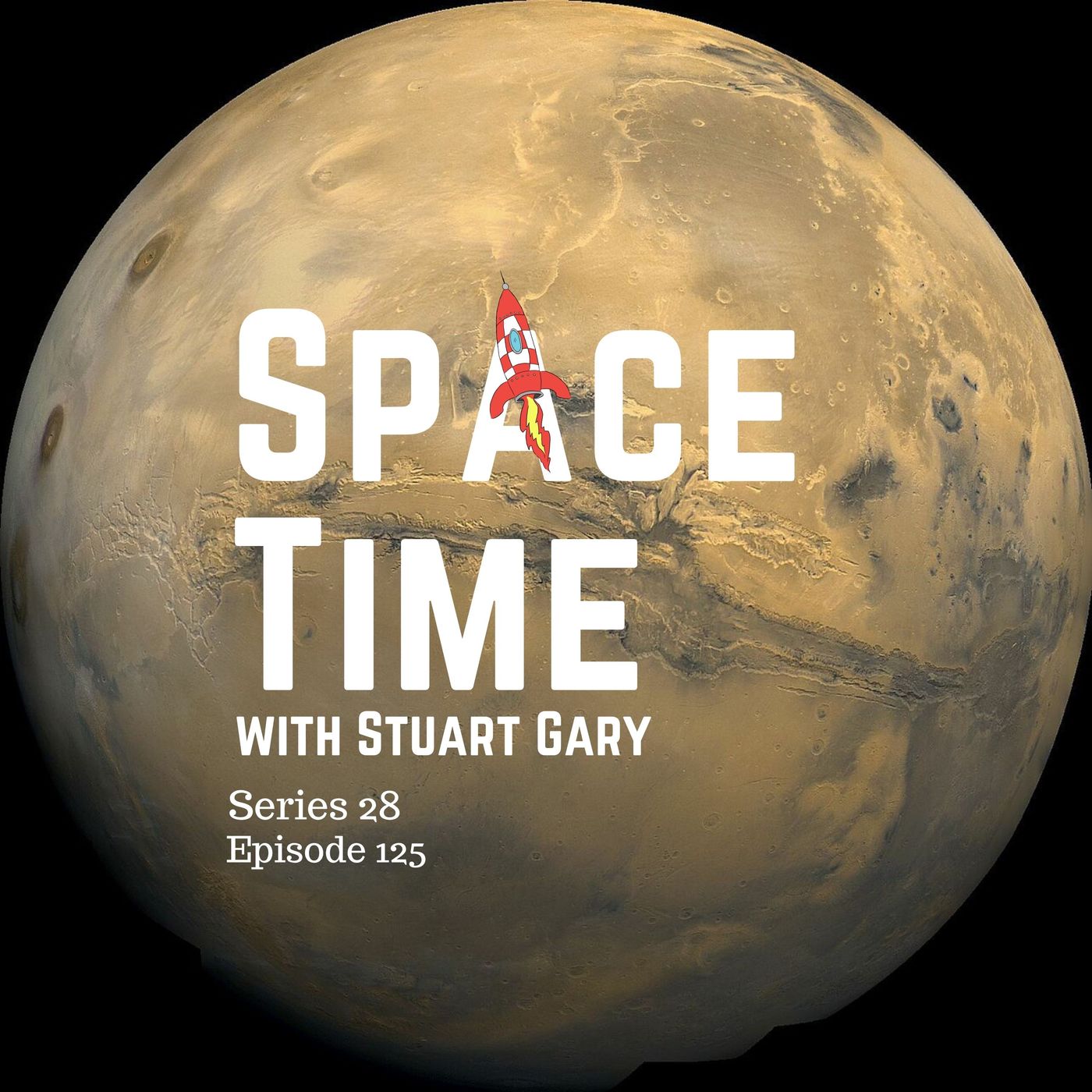
In this episode of SpaceTime, we uncover the latest findings in Martian meteorology, delve into Earth's ancient tectonic activity, and prepare for humanity's return to the Moon.
Raging Winds on Mars: Unveiling Martian Weather Patterns
A groundbreaking study published in the journal Science Advances reveals that wind speeds on Mars can reach up to 160 km/h, significantly higher than earlier estimates. Lead author Valentin U.H. Meckel from the University of Bern discusses how these powerful winds, along with dust devils, play a crucial role in shaping Mars' climate and dust distribution. This episode e...
Martian Oceans and Lunar Mysteries: Uncovering the Secrets of Our Cosmic Neighbours
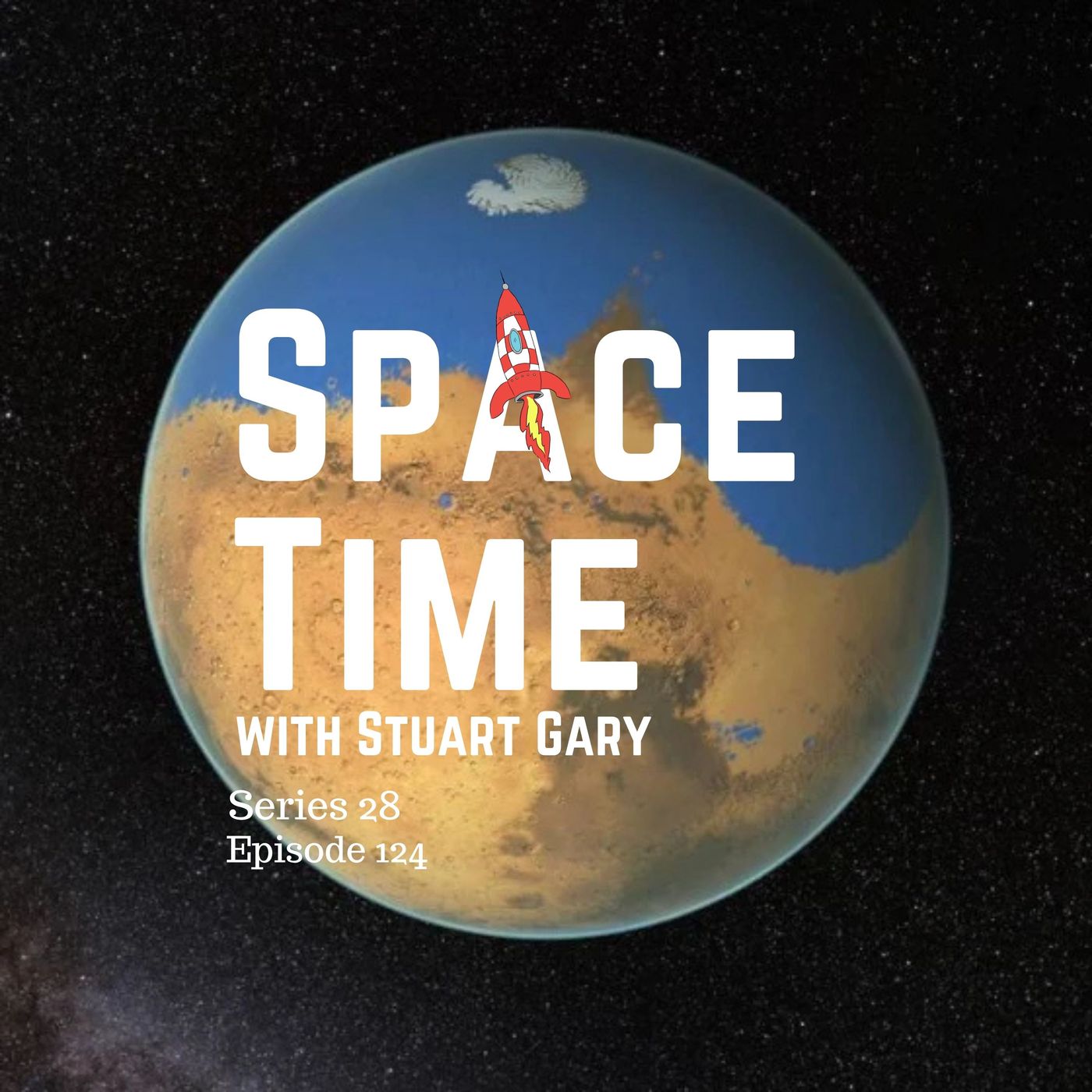
In this episode of SpaceTime, we explore groundbreaking discoveries that reshape our understanding of Mars, the Moon, and the Milky Way Galaxy.
Ancient Oceans on Mars: Geological Evidence Revealed
A new study published in the journal Geophysical Research Letters presents compelling geological evidence that Mars' Northern Hemisphere was once home to a vast ocean. Lead author Chris from the University of Arkansas discusses how comparisons between river rocks on Earth and Martian sediment reveal ancient river deltas and backwater zones, suggesting that liquid water flowed on the Red Planet, increasing the possibility of past l...
Hidden Hazards: Unmasking Earth's Threat from Invisible Asteroids

In this episode of SpaceTime, we delve into the intriguing world of near-Earth asteroids, the evolution of our universe, and the remarkable discovery of a rogue planet experiencing unprecedented growth.
Invisible Asteroids Near Venus: A Hidden Threat
Recent computer simulations published in the journal Astronomy and Astrophysics have raised alarms about a population of near-Earth asteroids that remain undetectable due to their proximity to Venus. These Venusian co-orbital asteroids, which share an orbital resonance with Venus, could pose a collision risk to Earth within a few thousand years. The study's lead author, Valerio Carumba, e...
Dark Stars and Cosmic Origins: Unraveling the Early Universe

In this episode of SpaceTime, we uncover the latest revelations in astrophysics, including the intriguing prospect of supermassive dark stars, Australia's ambitious lunar rover mission, and fresh insights into the formation of our solar system.
Supermassive Dark Stars: A New Cosmic Discovery
Astronomers have identified potential candidates for a new type of star in the early universe, known as supermassive dark stars. Recent observations from the Webb Space Telescope suggest that these stars, primarily composed of hydrogen and helium, are supported against gravitational collapse by dark matter. This episode delves into how these dark s...
Enceladus Unveiled: Fresh Discoveries of Organic Chemistry Beneath the Ice

In this episode of SpaceTime, we dive into the fascinating findings from Saturn's icy moon Enceladus, discuss delays in the Dream Chaser spaceplane's launch schedule, and celebrate NASA's breakthroughs in laser communications for deep space missions.
Enceladus: Unveiling Complex Chemistry
Recent discoveries reported in the journal Nature Astronomy reveal that Saturn's moon Enceladus is spewing complex organic molecules from its subsurface ocean. Data collected by the Cassini spacecraft during its mission has unveiled fresh insights into the chemical reactions occurring in this hidden ocean. The presence of organic molecules, including precursors for amino acids, r...
The Universe's Countdown: New Insights into Cosmic Fate and Fungal Origins
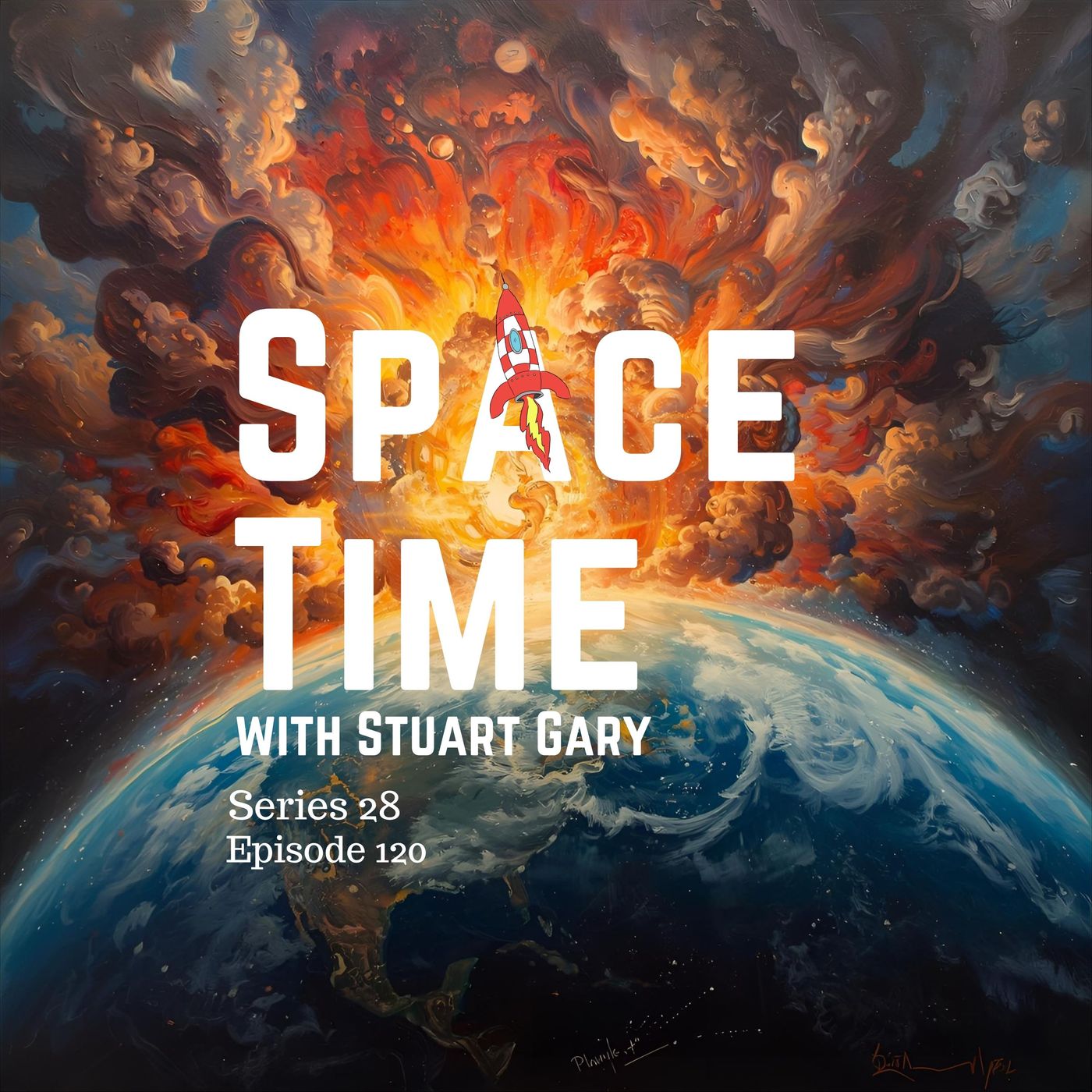
In this episode of SpaceTime, we explore the future of our universe, the latest advancements in mapping our Milky Way, and the pivotal role fungi played in the evolution of life on land.
The Universe's Fate: A Big Crunch in 20 Billion Years
A groundbreaking study published in the Journal of Cosmology and Astroparticle Physics reveals that the universe is approaching the midpoint of its 33 billion-year lifespan and may end in approximately 20 billion years. Lead author Henry Tighe from Cornell University presents new data suggesting that the universe's cosmological constant may be negative, leading to a...
Ceres: The Dwarf Planet That Might Have Hosted Life?

In this episode of SpaceTime, we delve into the intriguing potential for life on the dwarf planet Ceres, explore NASA's latest mission to study the heliosphere, and celebrate the achievements of the University of Melbourne's Spirit Nanosat.
Ceres: A Potentially Habitable World?
Recent research published in Science Advances suggests that Ceres, currently a frigid and frozen world, may have once harboured conditions suitable for life. By modelling the planet's thermal and chemical history, scientists propose that Ceres could have sustained a long-lasting energy source, allowing for microbial metabolism. While there's no direct evidence of l...
Mercury's Shrinking Secrets: Insights into the Solar System's Smallest Planet

(00:00:00) Mercury's Shrinking Secrets: Insights into the Solar System's Smallest Planet
(00:00:43) Mercury's Ongoing Shrinkage
(00:03:11) NASA's Carruthers Geocorona Observatory
(00:11:52) Insights from Martian Meteorite NWA 16254
(00:14:23) Tech News
In this episode of SpaceTime, we explore the intriguing dynamics of Mercury's shrinking size, embark on a mission to unveil Earth's elusive exosphere, and uncover the secrets of ancient volcanic activity on Mars.
Mercury's Ongoing Shrinkage
Recent research published in AGU Advances reveals that Mercury continues to shrink as it cools, a process that has been ongoing since its formation 4.6 billion years ago. Scientists h...
Stardust from Beyond: Unveiling the Secrets of Asteroid Bennu and Saturn's Mysteries

(00:00:00) Stardust from Beyond: Unveiling the Secrets of Asteroid Bennu and Saturn's Mysteries
(00:00:47) Scientists have discovered minerals older than our solar system embedded in asteroid Bennu
(00:10:22) Scientists using NASA's Webb telescope have uncovered mysterious features in Saturn's atmosphere
(00:14:58) NASA's Parker Solar Probe completes 25th close approach to the sun
(00:17:27) The Science Report
In this episode of Space Time, we uncover groundbreaking discoveries that challenge our understanding of the cosmos. Join Stuart Gary as he discusses the astonishing findings from the asteroid Bennu, revealing minerals older than our solar system itself. Delve into the unexpected features...
Red Dots and Black Hole Stars: Unraveling Cosmic Secrets
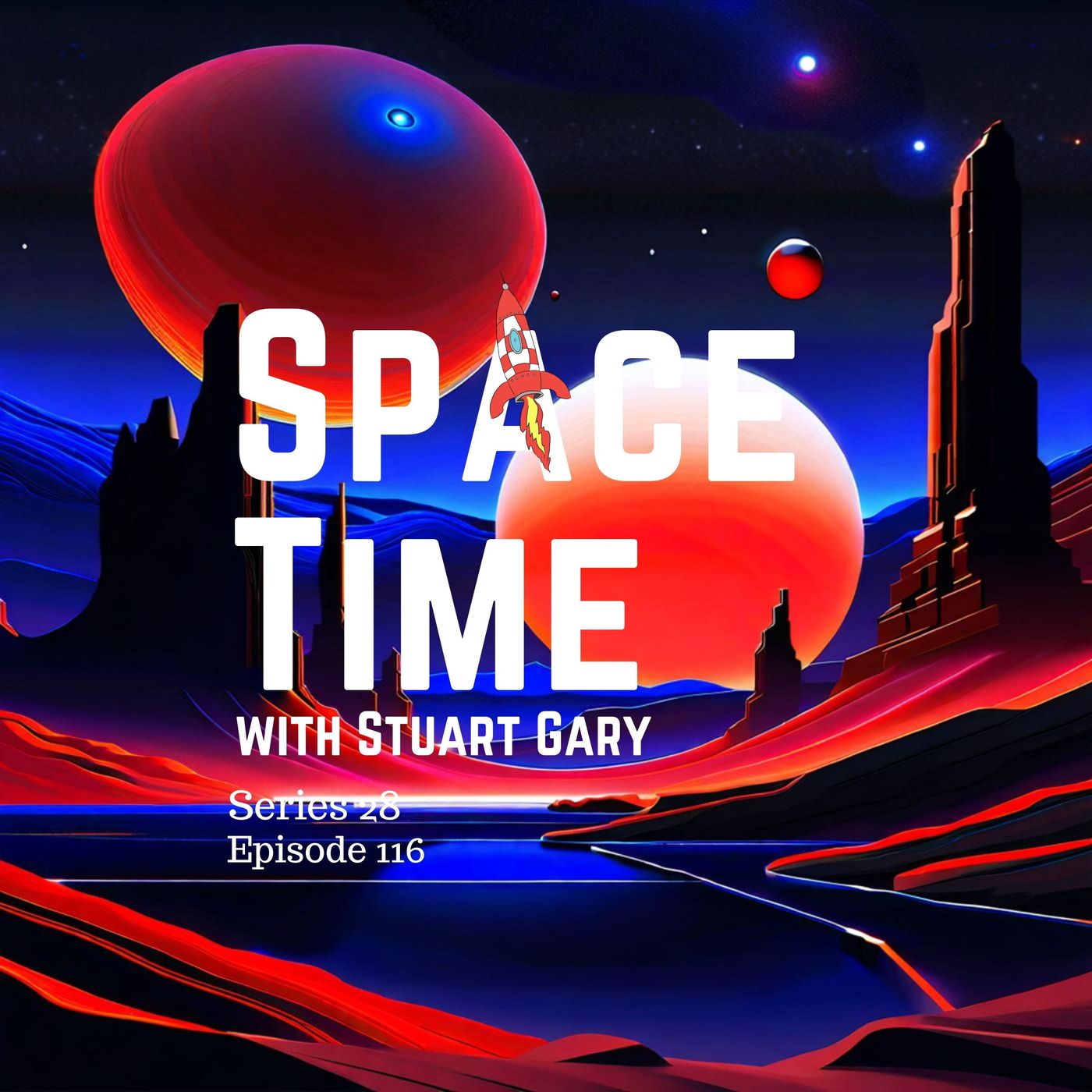
In this episode of SpaceTime, we dive into the cosmos to uncover the secrets of the early universe, explore the potential for black hole atmospheres, and examine the intriguing history of habitability on Mars, alongside the launch of a new deep space antenna by the European Space Agency.
Mysterious Red Dots in the Early Universe
Astronomers have identified a population of enigmatic red dots in the early universe, potentially representing exotic stellar atmospheres around ancient black holes. These findings, published in Astronomy and Astrophysics, could bridge the gap in understanding the rapid growth of s...
Exoplanets Galore: Celebrating 6,000 Discoveries and Exploring Venus

In this episode of SpaceTime, we celebrate a major milestone in exoplanet discoveries, unravel the enigmatic surface of Venus, and delve into the intriguing tale of interstellar comet 3I ATLAS.
Exoplanet Count Surpasses 6,000
Astronomers have reached an impressive milestone, confirming their 6,000th exoplanet, a testament to the rapid pace of discoveries since the first detection of an exoplanet in 1995. This milestone not only highlights the evolving understanding of our galaxy but also raises questions about the myriad of planetary types discovered, from rocky planets to gas giants. While the hunt for Earth-like planets continues, t...
Cosmic Webs and Dark Energy: A New Model for the Universe
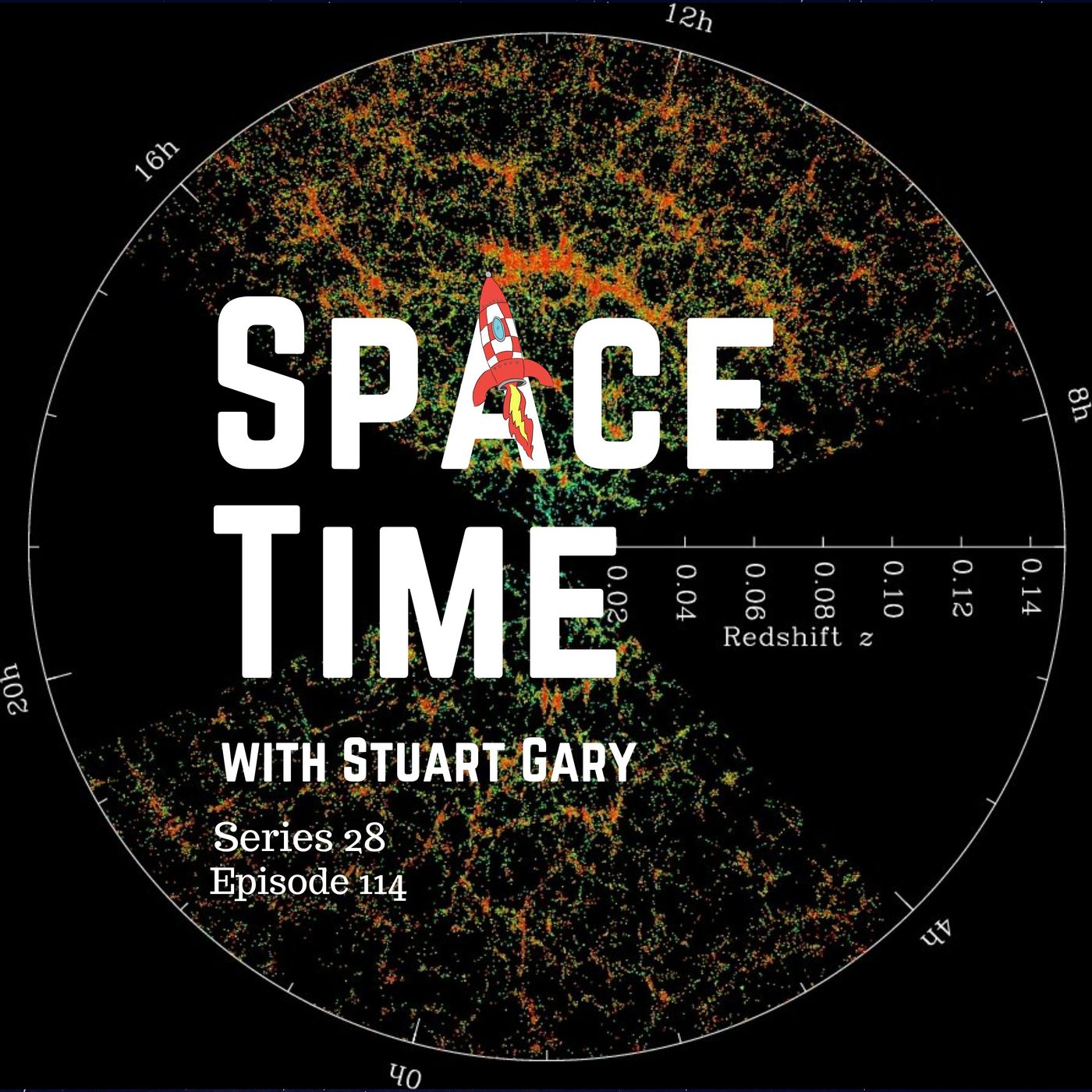
In this episode of SpaceTime, we tackle the mysteries of the cosmos with a new mathematical model of the universe and ponder the age-old question: are we alone in the universe?
New Model of the Universe
Scientists have unveiled a groundbreaking mathematical model aimed at simplifying our understanding of the universe's evolution over the past 13.8 billion years. This innovative research, based on data from the Dark Energy Spectroscopic Instrument (DESI), offers fresh insights into the cosmic web's structure, revealing how dark energy influences cosmic expansion. Lead author Leonardo Gianni from the University of Queensland...
Galactic Jets and Black Hole Explosions: Unveiling Cosmic Mysteries
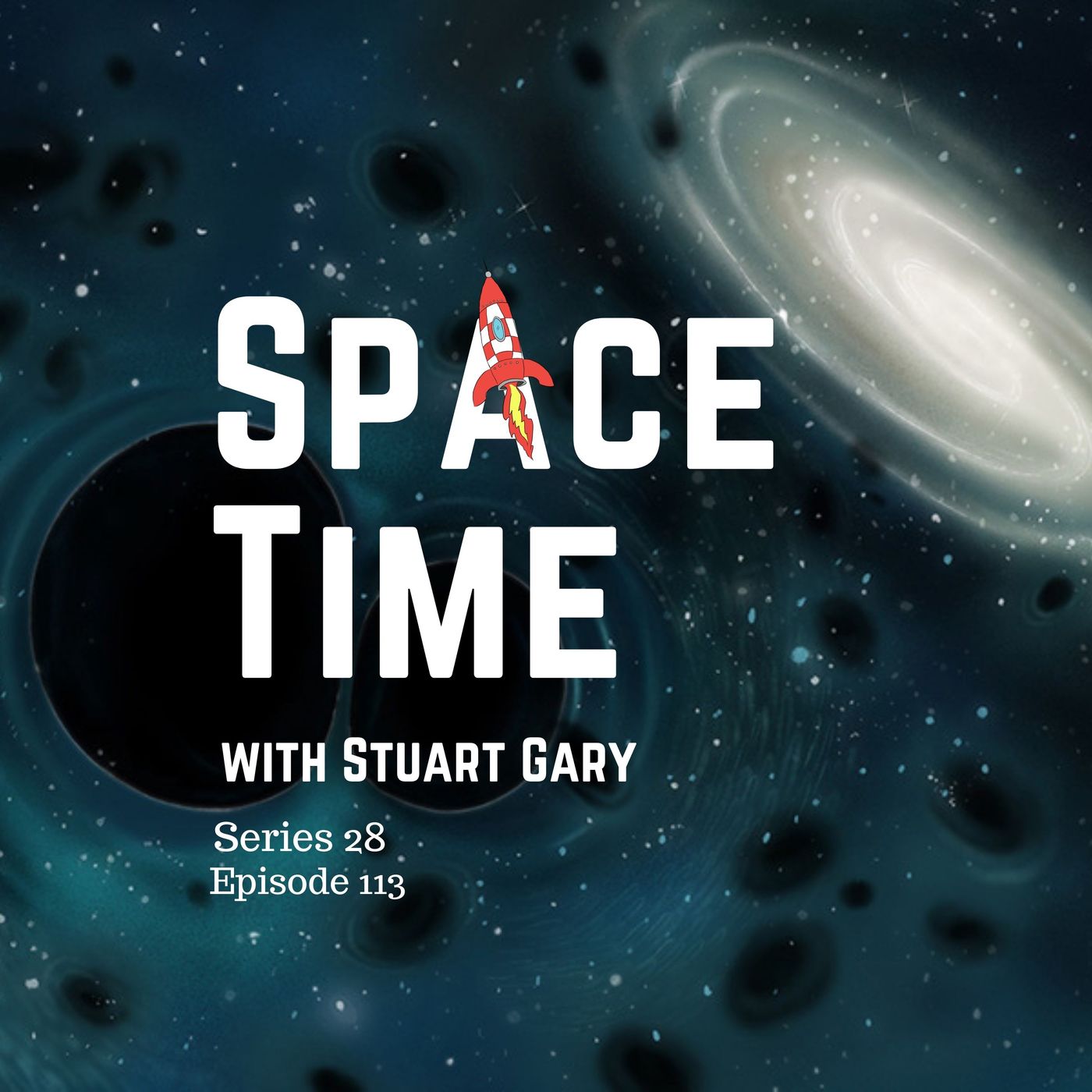
In this episode of SpaceTime, we explore the thrilling prospects of observing exploding black holes, an astonishing stellar jet on the outskirts of the Milky Way, and the meticulous preparations for an Earth observation satellite mission.
Exploding Black Holes on the Horizon
A groundbreaking study suggests that astronomers may soon witness a black hole explosion, an event theorised to occur once every 100,000 years. Researchers now believe there’s a 90% chance of observing such an explosion within the next decade, potentially revealing primordial black holes formed shortly after the Big Bang. These explosions could provide a c...
Earth's Metal Recipe: Tectonics and the Supercontinent Split

In this episode of SpaceTime, we uncover the secrets of ancient geology, explore the watery past of an asteroid, and delve into the origins of globular clusters.
Supercontinent Breakup Revealed
Scientists have made significant strides in understanding the breakup of the supercontinent Rodinia, which occurred over 800 million years ago. Research conducted on rare minerals in Outback Australia has revealed how niobium-rich carbonatites rose through fault zones during tectonic rifting, providing insights into the geological processes that shaped our planet. These findings not only illuminate the history of Rodinia but also highlight the importance of...
Mars' Microbial Secrets: Potential Biosignatures Uncovered

In this episode of SpaceTime, we dive into groundbreaking discoveries on Mars, the intriguing atmosphere of Makemake, and the awe-inspiring total lunar eclipse that captivated millions.
Potential Biosignatures on Mars
NASA scientists have revealed that samples collected by the Perseverance rover from Jezero Crater may hold the best chance yet of uncovering evidence of past microbial life. The samples, taken from the rock formation known as Chiava Falls, exhibit characteristics that could indicate potential biosignatures. These findings suggest that Mars may have been habitable for longer than previously thought, challenging earlier assumptions about the...
Water Origins: Comets, Satellites, and Rocket Fuels
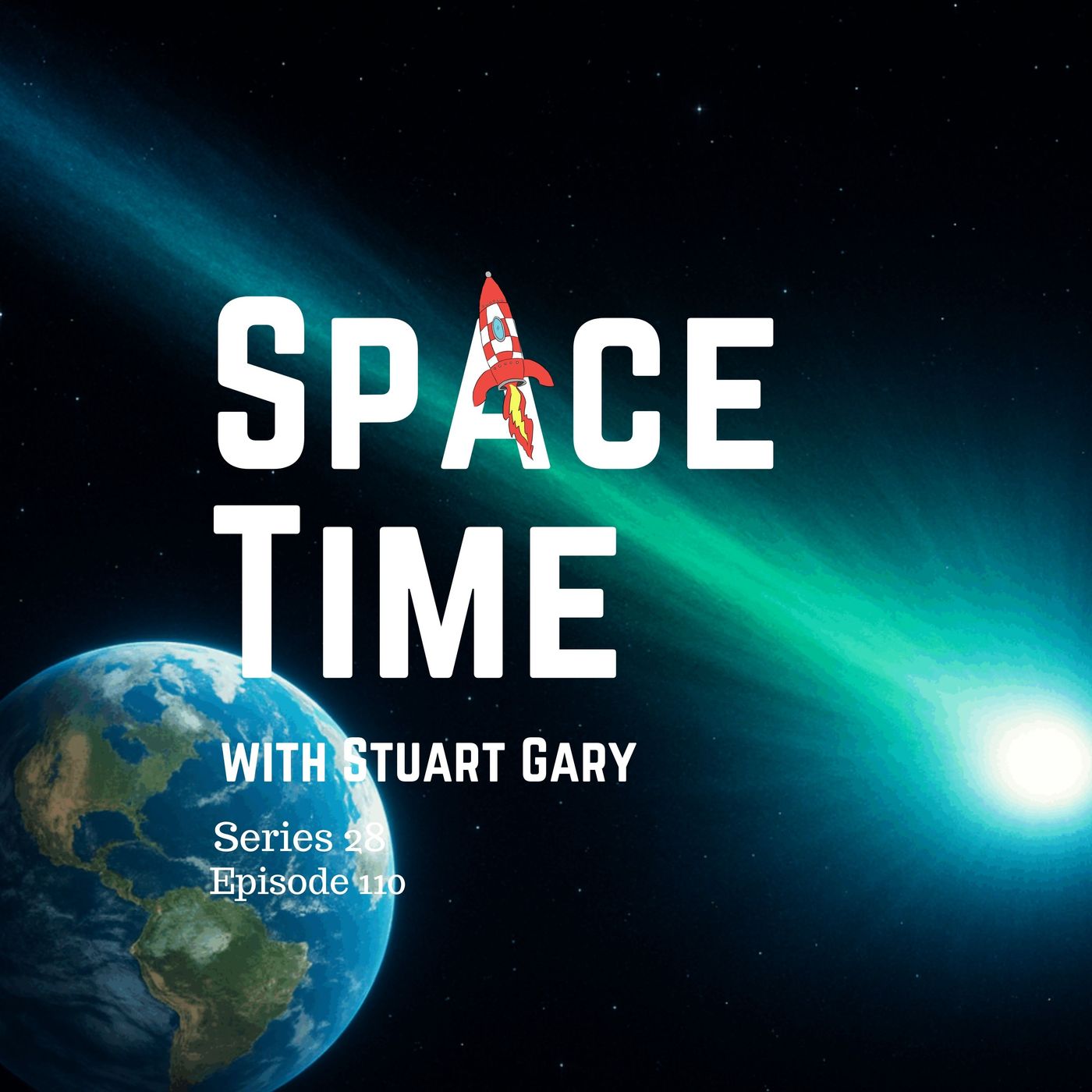
Sponsor Details:
This episode of SpaceTime is brought to you with the support of Insta360. Capture your adventures with their latest game-changer, the GOUltra. For a special SpaceTime listener offer, visit store.insta360.com and use the promo code SPACETIME at checkout. Help support SpaceTime and get a great deal. Win/win!
In this episode of SpaceTime, we explore fascinating insights into the origins of Earth's water, the launch of Israel's advanced spy satellite, and the development of a groundbreaking high-energy...
Solar Flares, Jupiter's Core, and Life on Exoplanets
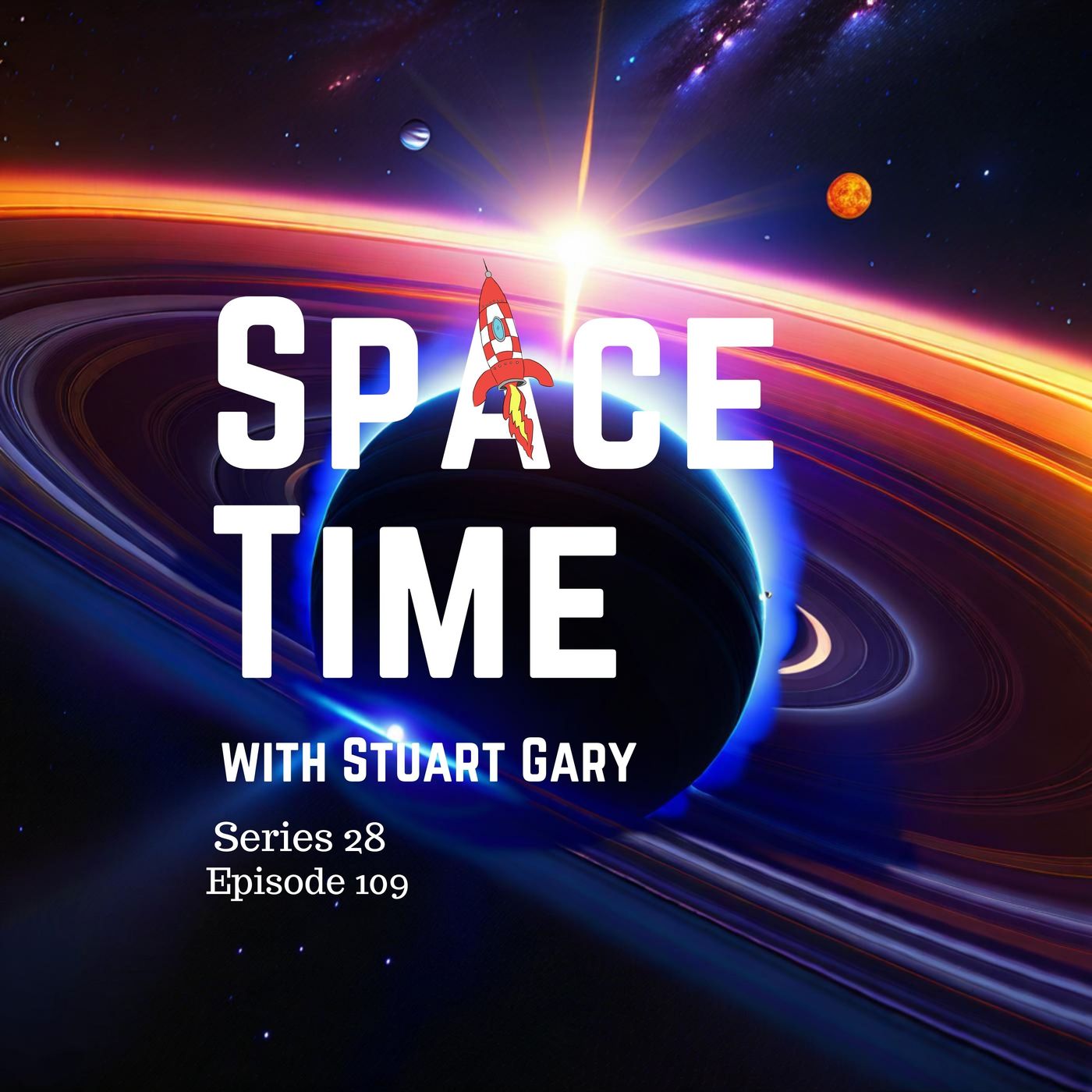
Sponsor Details:
This episode of SpaceTime is brought to you with the support of Insta360. Capture your adventures with their latest game-changer, the GOUltra. For a special SpaceTime listener offer, visit store.insta360.com and use the promo code SPACETIME at checkout. Help support SpaceTime and get a great deal. Win/win!
In this episode of SpaceTime, we delve into some astounding revelations in solar physics and planetary science, including the extreme temperatures of solar flares, new insights into the formation...
Martian Mysteries: Unearthing Asteroid Remnants
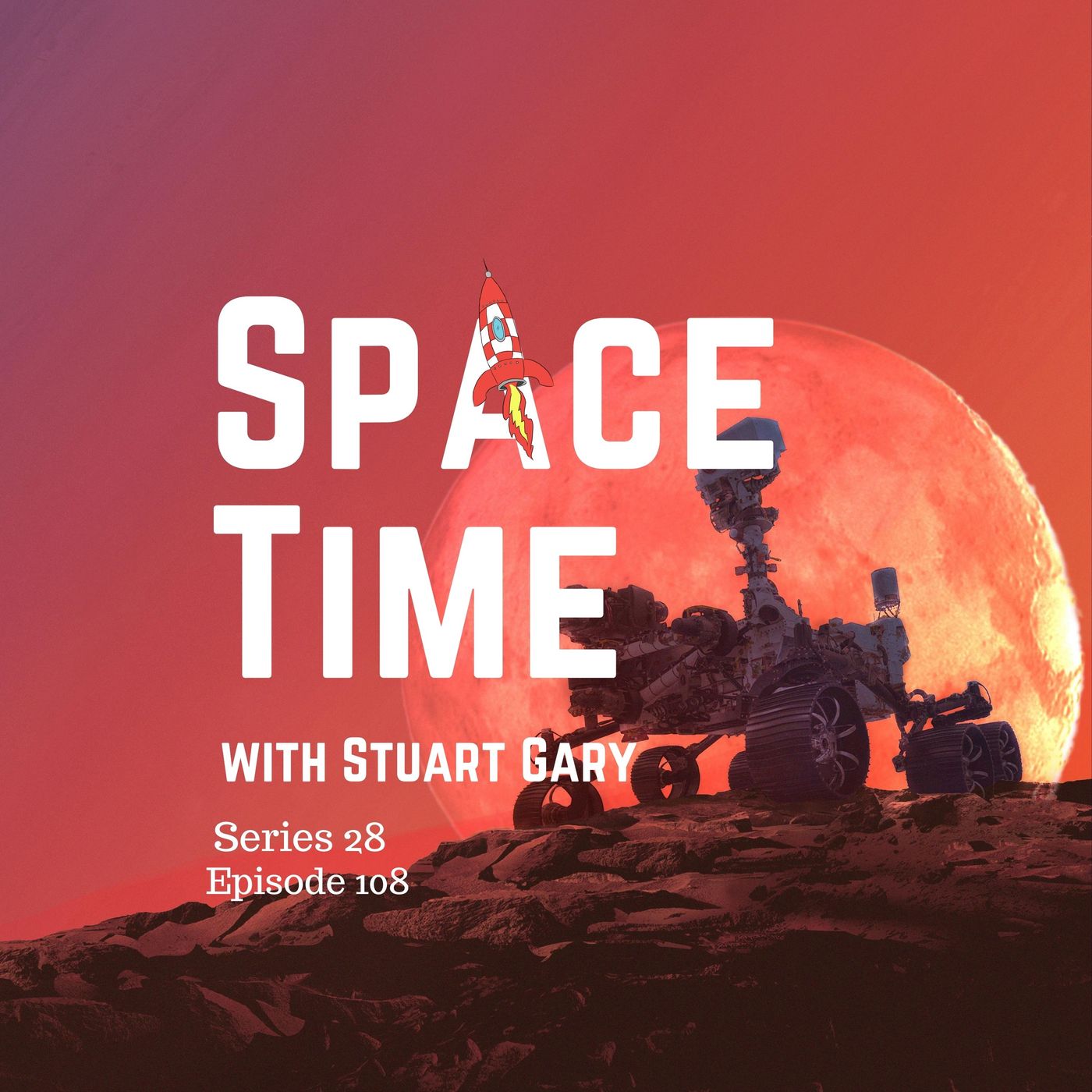
Sponsor Details:
This episode of SpaceTime is brought to you with the support of Insta360. Capture your adventures with their latest game-changer, the GOUltra. For a special SpaceTime listener offer, visit store.insta360.com and use the promo code SPACETIME at checkout. Help support SpaceTime and get a great deal. Win/win!
In this episode of SpaceTime, we uncover groundbreaking discoveries in planetary science and solar physics, including the remnants of ancient asteroids on Mars, the recovery of the Mother's Day m...
Martian Mantle Mysteries: Unearthing Asteroid Remnants| S28E108, 109 & 110
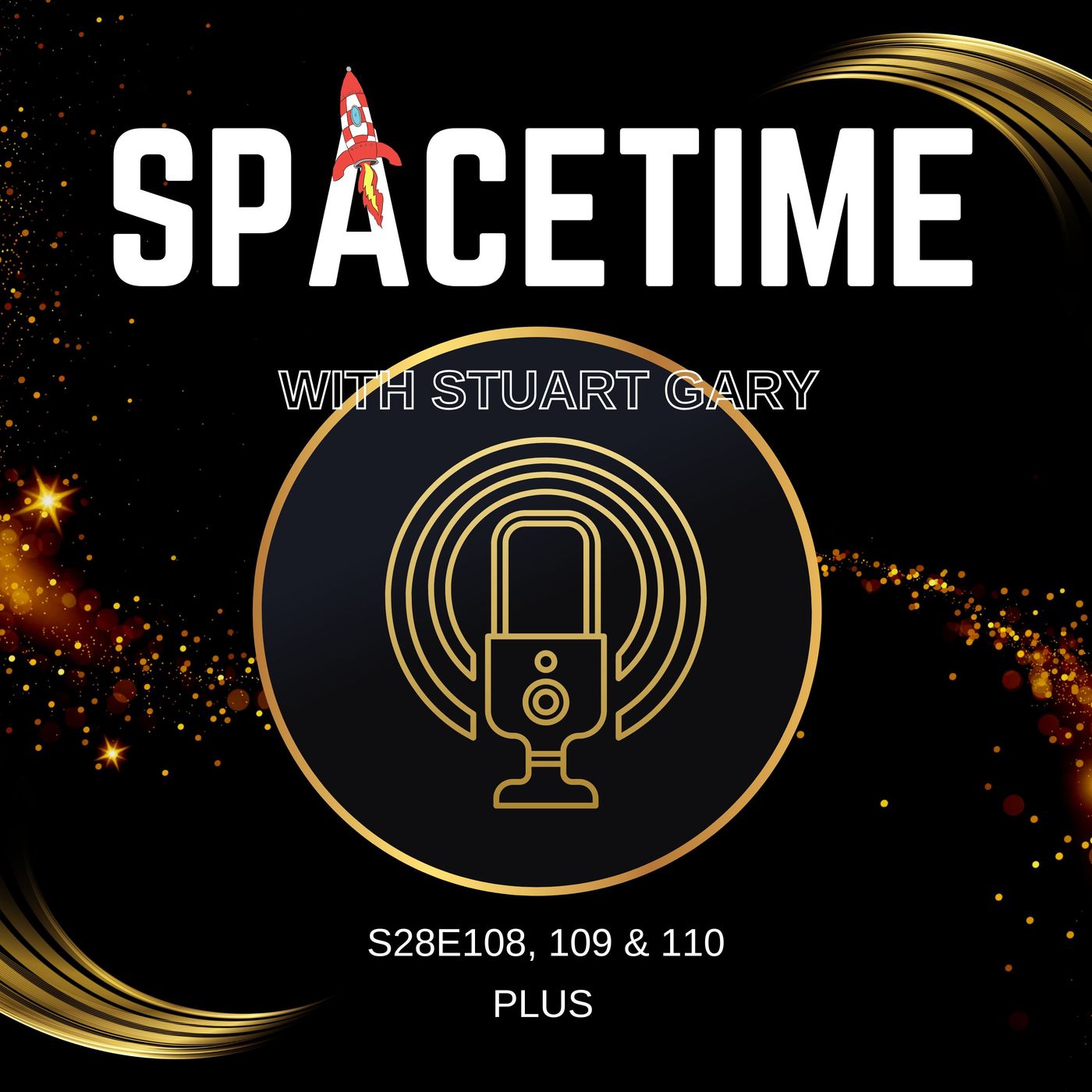
SpaceTime S28E108 S28E109 S28E110 w/c September 8th, 2025 Space, Astronomy and Science Podcast. SpaceTime Series 28 Episode 108 *Asteroids trapped in the Martian interior A new study has concluded that asteroids that impacted Mars early in its history now lie scattered in giant lumps in the red planet’s mantle. *Discovering the Mother’s day Meteorite Scientists have recovered samples of a dazzling meteor which lit up Western Australian skies on Mother’s Day. *Tracing superfast electrons back to Sun Astronomers have discovered two se...
Cosmic Revelations: The Brightest Fast Radio Burst and New Horizons' Hibernation Journey
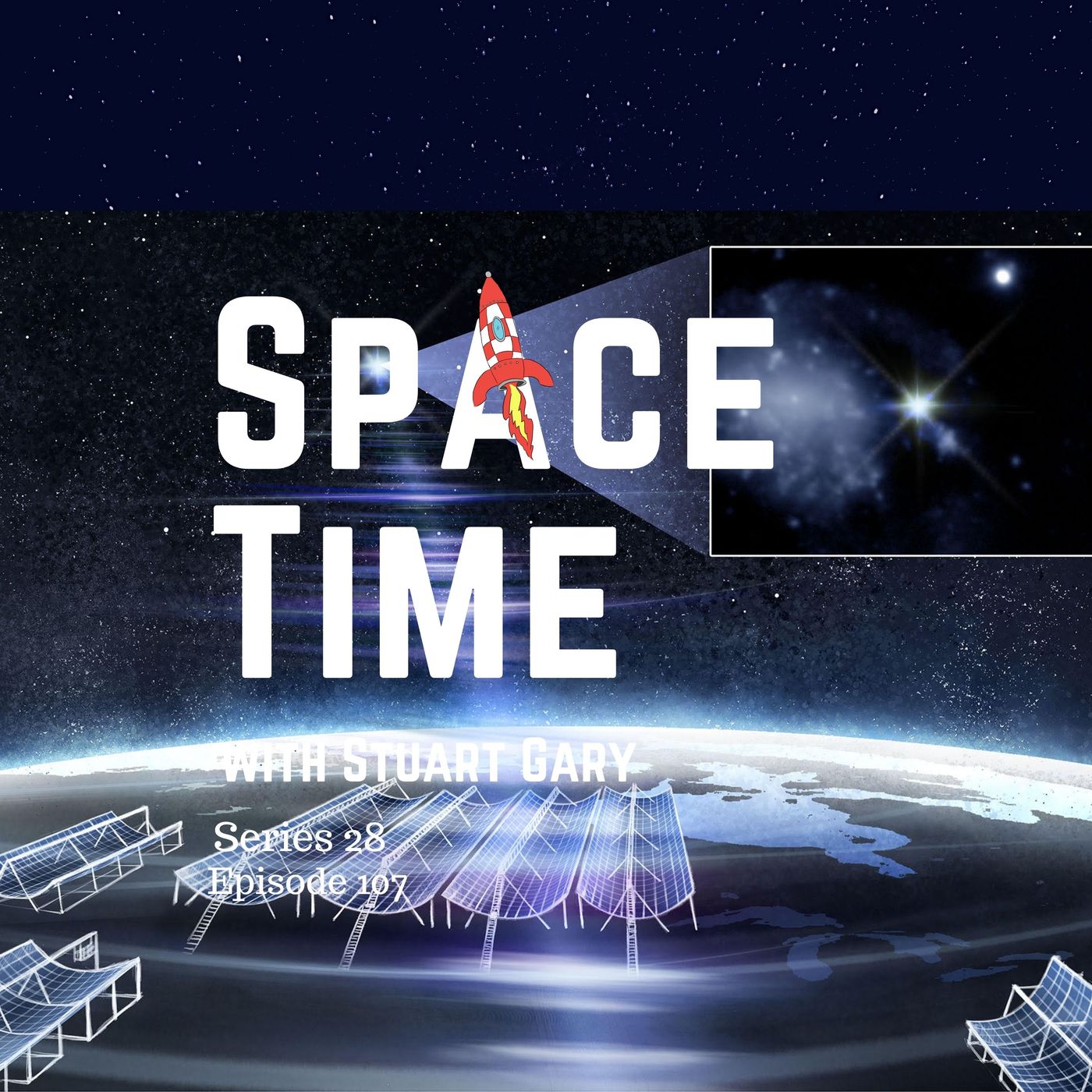
In this episode of SpaceTime, we uncover some of the most exciting discoveries and developments in the universe, including the detection of the brightest fast radio burst ever observed, the New Horizons spacecraft's record-setting hibernation, and an innovative method for generating oxygen in space.
Brightest Fast Radio Burst Detected
Astronomers have identified what is being hailed as the brightest fast radio burst (FRB) ever recorded. Catalogued as FRB 2025 0316A, this extraordinary flash of energy was detected 130 million light years away in the spiral galaxy NGC 4141. The burst's unprecedented brightness and proximity provide scientists with...
Lunar Innovations: Creating Water and Fuel from Moon Dust and Psyche's Progress

In this episode of SpaceTime, we explore the latest developments in space exploration, including the European Space Agency's Juice mission, NASA's Psyche spacecraft, and groundbreaking advancements in lunar resource utilization.
Juice Mission Back on Track
The European Space Agency's Jupiter Icy Moons Explorer, Juice, is set for a critical flyby of Venus after overcoming a communications anomaly that temporarily severed contact with Earth. Engineers successfully restored communication with the spacecraft, which is now on its way to study Jupiter's Galilean moons—Ganymede, Callisto, and Europa—believed to harbor subsurface oceans that may support extraterrestrial life...
Stellar Success: SpaceX's Starship Soars and Mars' Mysteries Uncovered

In this episode of SpaceTime, we delve into thrilling advancements in space exploration, including a remarkable test flight of SpaceX's Starship, groundbreaking insights into Mars, and a classified mission from the United States Space Force.
Starship's Spectacular Test Flight
After overcoming numerous challenges, SpaceX's Starship has successfully completed its 10th test flight, launching from Texas and splashing down in the Indian Ocean. This flight demonstrated the rocket's capabilities, including a controlled splashdown of the Super Heavy booster and the successful deployment of Starlink satellite simulators. The mission provided critical data on the vehicle's performance d...
Rogue Worlds and Solar Power
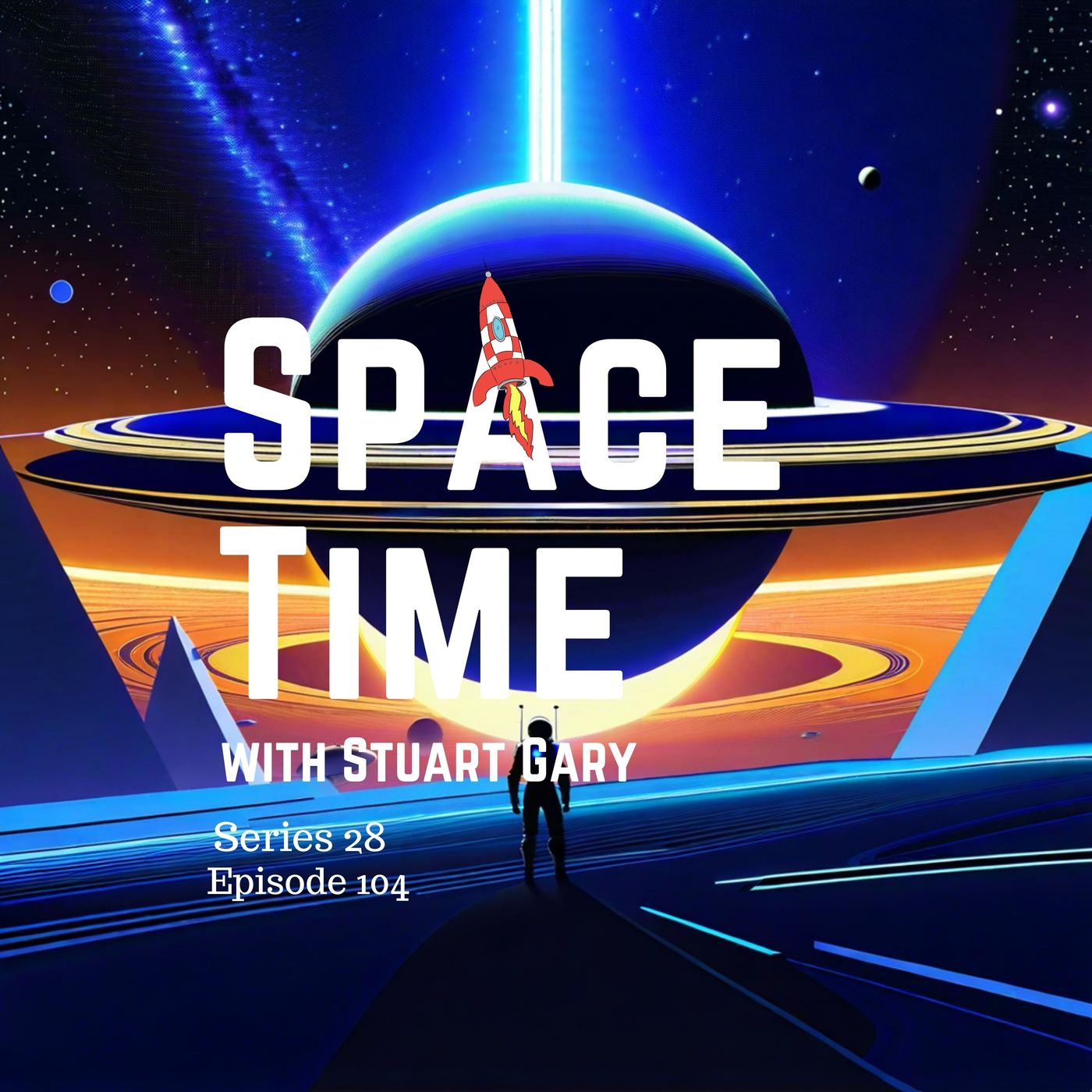
This episode is brought to you by the support of Insta360 - the leaders and innovators in portable 360 Photography. And they have just released the all new UltraGo...the take anywhere camera. Get all the details by visiting store.insta360.com and use the promo code SPACETIME at checkout for our special listener offer.
In this episode of SpaceTime, we explore groundbreaking discoveries and developments in the realm of astrophysics and space exploration.Rogue Planets and Their Potential
A fascinating new study reveals that giant free-floating p...
Cosmic Horror: The Discovery of a Wandering Black Hole and a Meteorite's Journey

This episode of SpaceTime is brought to you by Insta360's newest camera, the GoUltra. To get more details on this go anywhere camera, visit store.insta360.com and for our special offer use the code SPACETIME at checkout.
In this episode of SpaceTime, we uncover the mysteries lurking in the cosmos, from a rogue supermassive black hole to a meteorite crash in Georgia, and the origins of asteroids Bennu and Richie.
An Invisible Monster in the Cosmos
Astronomers have made a c...
Cosmic Encounters: Asteroids, Moons, and the Milky Way's Future Unveiled
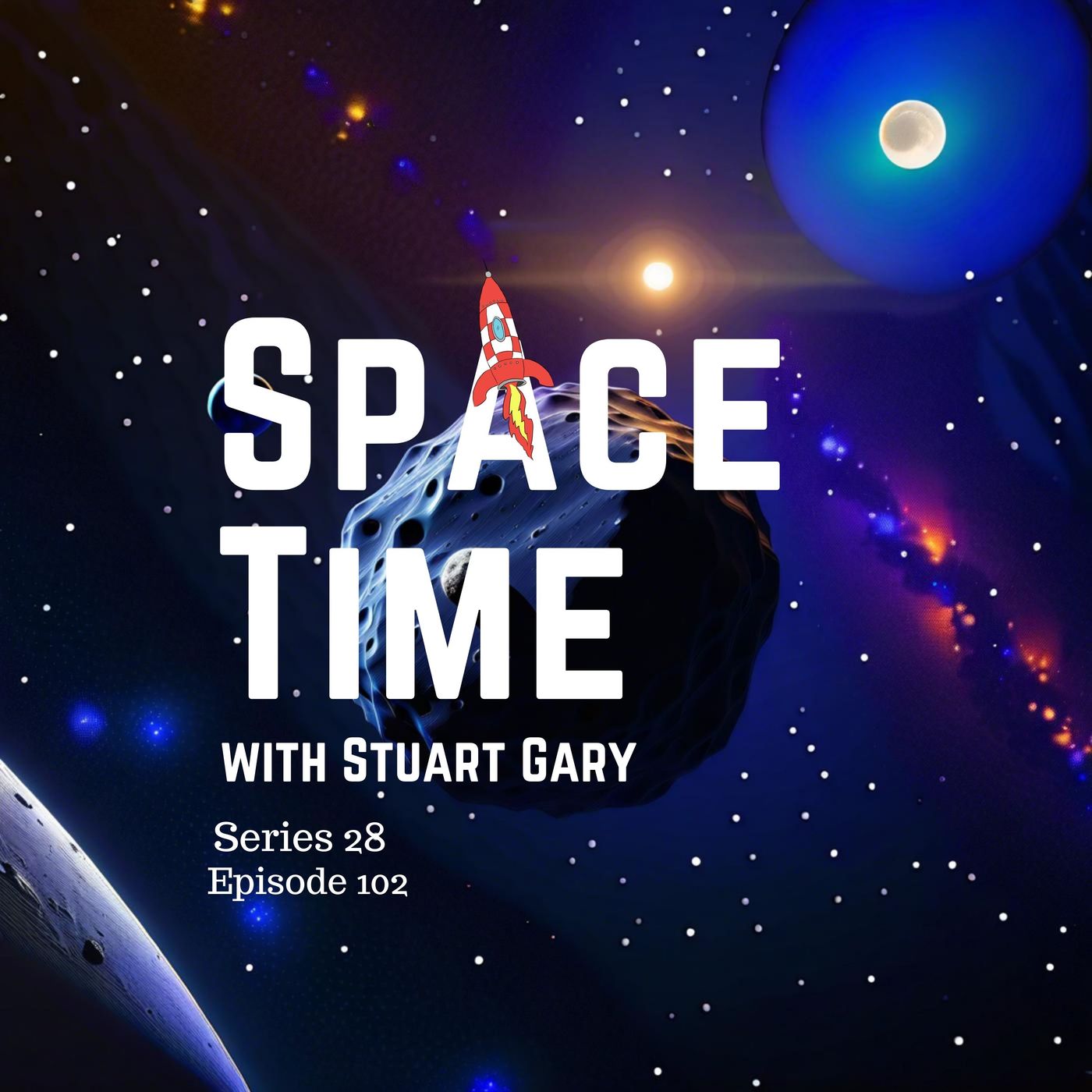
This episode of SpaceTime is brought to you with the support of Insta360. Capture your adventures with their latest game-changer, the GoUltra. For a special offer, visit store.insta360.com and use the promo code SPACETIME at checkout.
In this episode of SpaceTime, we explore thrilling recent discoveries and events in the cosmos, including close encounters with asteroids, a newly discovered moon around Uranus, and the cosmic dance of dwarf galaxies.
Earth Dodges Two Asteroid Near Misses
Planet Earth has narrowly avoided two asteroid...
The Comet That Cooled the Earth - Unpacking the Younger Dryas Mystery
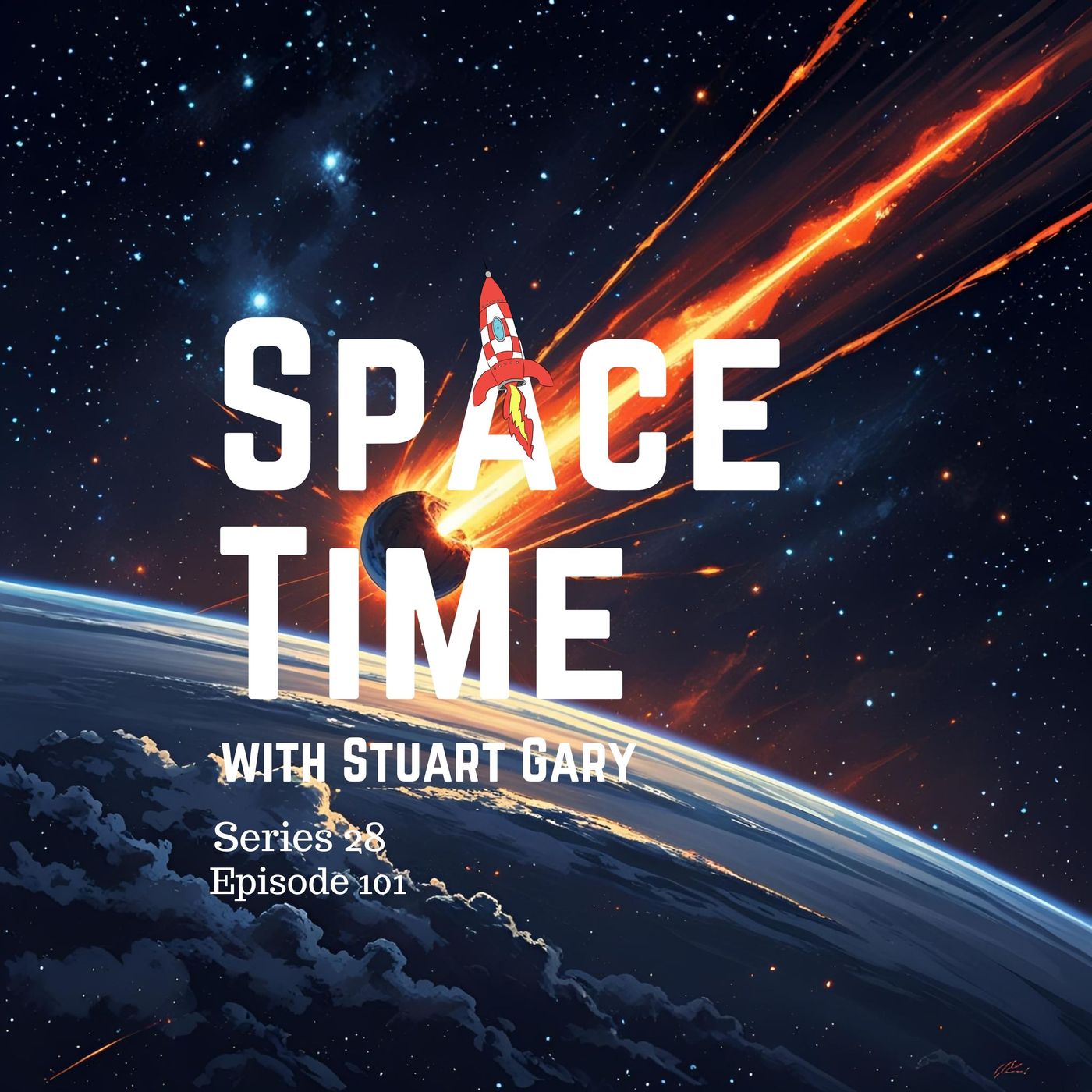
In this episode of SpaceTime, we delve into intriguing new research that challenges our understanding of Earth's climatic history, the discovery of a rare astronomical phenomenon, and China's advancements in lunar exploration.
Did a Comet Trigger the Younger Dryas Cool Off?
A groundbreaking study has emerged suggesting that a massive comet may have instigated Earth's Younger Dryas cool off event, traditionally attributed to glacial meltwater. Analysis of ocean sediments published in the journal PLOS One reveals geochemical clues that support the hypothesis of Earth encountering a disintegrating comet around 12,800 years ago. This event could h...
